|
We've had plenty of clear skies lately - after a generally rainy spring - but the atmosphere has been so turbulent that I've rarely thought it worthwhile to take out a telescope. This week brought more of the same, but also something unique: a rare, close conjunction of Venus and Jupiter in the early morning sky. With the sky mostly clear, transparency quite good, and seeing a good deal worse than average, I woke up at around 5 AM last night and walked out with my Takahashi. I wasn't sure where to go. Trees blocked the view of the planets from my backyard. Before our move, I might have walked to the park I like best, but that's 20 minutes away now. By the time I got there I figured the Sun would be too high in the sky - and I'd be painfully sore from carrying everything. I wandered in that general direction all the same, and then noticed a hill I usually pass while taking my kids to the playground. I decided to walk up the hill just in case - and, sure enough, by the time I got to the top I noticed two brilliant beacons just rising into view above the eastern horizon. Jupiter and Venus! What a difference the new carbon fiber tripod makes! Walking with it is so much easier, and the FC-100DZ is much more stable now. After setting up I plugged in a 24mm Panoptic eyepiece - for a magnification of 33x - and took in the view. I'm not a big conjunction guy - I care much more about seeing details on other worlds than I do about seeing those worlds appear close together - but it was pretty impressive to see both Jupiter and Venus in the same field of view. Although seeing was very poor and it was hard to make out much detail on either world, it was easy to get a sense of just how different they are from each other, and how diverse even our little Solar System really is. It certainly helped that three of Jupiter's moons were clearly visible, and that Venus was roughly halfway illuminated. I tried to take a customary blurry cellphone picture, and just by chance at that very moment a plane zipped in front of Jupiter. As night turned to day, I packed up and walked home. When I returned to my backyard, I noticed that Jupiter and Venus were both clearly visible from a little spot near my fence. Maybe I hadn't needed to walk, after all? Still, there's always something magical about that hour before sunrise, when the city is still asleep and the loudest noises are often birdsong.
0 Comments
The weather has been stormy over the past few weeks, but this morning the clouds cleared and the seeing promised to be good. I woke up at 2:45 AM and walked out the door by 3:20, hauling my APM 140. As I reached my local park, it dawned on me that conditions were essentially perfect. The sky was wonderfully transparent, the temperature was perfect, and there was a thin misting of dew on the ground. The rabbits and fireflies that used to give the park such a magical air, however, have largely disappeared (for now). It was a special morning for more than one reason. The Moon had just passed in front (occulted) Mars, and the two worlds were still right next to each other in the night sky. It was a stunning sight as I set up the APM. Then, when I wheeled the big telescope around to have a look at the Moon, I was just floored by the spectacular, razor-sharp detail. Rilles and craterlets snapped into view as I've never seen them, and I thought I could actually pick up gradations of color on a Moon that has always looked monochrome to me. It was easy to get lost in that view, but I had a job to do: observe Mars as it approaches opposition. Now, it's around five weeks away - hard to believe! - and wow does the planet look big and bright. The APM revealed it in spectacular detail, with Syrtis Major huge and dark on the planet's surface, arcing north from a south polar cap that now seems small (but bright), with Nodus Alcyonius obvious nearby. It was easily the best view of Mars I've had. By 4 AM the view softened a bit, as a turbulence entered our terrestrial atmosphere. I think I noticed a hint of the planet's rotation between 3:45 and 4:45 AM; Syrtis Major seemed just a bit offset from where it was when I set up. I knew my iPhone would never capture even a half-decent image of the view, and I kicked myself for not bringing a sketching pad. Still, I have an app called "Paper" on my phone, and I used that to quickly just down what I could easily see. An enormous amount of detail is missing, of course, including many subtle grays south of Syrtis Major. Yet I'm hopeful that I'll get better at this, and I could tell that it helped me observe more closely and carefully. By 4:30 AM or so, the highlights of the winter sky had climbed above the horizon. Of course, I had to have a look at Orion. To my surprise, six stars were visible in the Trapezium - a first for me, if memory serves. Through the APM, the nebula looked about as impressive near the light-polluted horizon as it does while near zenith with my Takahashi (or maybe even a little better). Rigel B was much easier to spot than I can remember, and the Pleiades were just spectacular. Venus, also rising in the east, was lost in atmospheric turbulence. But still, I observed its half-disk for a minute or so.
I've praised it before in this space, but wow - I cannot say enough about this APM refractor. There are times when I've fantasized about selling all my gear in exchange for an Astro-Physics refractor - something truly high-end. Yet I just can't see how the APM can be improved. I see less false color with the APM than I do with the Takahashi - even with the Takahashi's focal extender screwed in - and the detail, contrast, and color I can see on planets is just otherworldly (sorry). Bright deep space objects are a joy to observe, and the every last detail on the telescope - from the focuser to the dew shield - is a pleasure to use. Like my TV-85, there's something magical about this telescope. It's a true keeper. Also deserving of praise: TeleVue Delos eyepieces. They are, without doubt, the best I've used in terms of clarity, contrast, and comfort for my eye. Maybe I'll get another come Christmas. We're less than two months away from Mars reaching opposition, and the red planet is getting awfully bright in the morning sky. Its apparent size is getting pretty big, too, and there are - as yet - no signs of the planetary dust storm that made it so much harder to see details on the planet during its last opposition, in 2018. Now is the time to observe Mars, and with that in mind I dragged my APM 140 out of the apartment and down to the park at 3:30 this morning.
Wispy cirrus clouds were starting to advance from the west as I set up my telescope, and there was an odd haze in the air. Street lamps were surrounded with halos that took on an odd fractal pattern I'm not sure I've seen before. After I started observing, I noticed the same thing around Mars. Oh well! The planet was spectacular nonetheless. The clouds that constitute its south polar hood appear to have broken up as the southern hemisphere enters summer, and the ice cap - now clearly visible - seems quite small. I could plainly make out an an intricate latticework of dark albedo markings stretching up from the pole, covering maybe half the planet's surface. Tonight, the atmosphere allowed me to reach around 170x before the view got a little mushy, and at that magnification the planet is still quite small. Easily big enough, however, to discern a whole lot of detail. Venus had climbed fairly high above the horizon by around 4 AM, and wow did it look weird with the naked eye: squashed into a fat little triangle by those strange atmospheric conditions. It was hazy and painfully bright through the telescope, though still satisfying to see the planet, from our perspective halfway illuminated. I thought I could make out some detail in the planet's clouds around its terminator, near the equator, but seeing was bad enough to make me question that observation. The Pleiades, meanwhile, had also wheeled into view, and I had my first look at them with the APM. Naturally the view was brighter than I've had before, though I wished for a wide field eyepiece - I'd left my 55mm Plossl at home - and the seeing was bad enough to mar the view ever so slightly. Still an impressive sight, however. Once again, telescope, mount, and tripod all functioned exceptionally well. I'm impressed at how easily the lightweight AYO II handles the big refractor when everything is properly balanced. Bizarrely, the telescope handles more smoothly and easily than the Takahashi FC-100DC on the same mount - or maybe it just seems that way, since it takes a little more effort to use the smaller telescope's focuser (it's one-speed only). Certainly the APM is my favorite telescope to use, with the little TeleVue a close second (it would be first, but that big aperture is hard to resist). The good times keep coming! Another clear morning, with average seeing and above-average transparency. Astronomy and my toddler have been costing me sleep recently, and deep down I knew it wasn't a good idea to head out in the wee hours again. Yet there I was, waking up at 2:30 AM, gulping down four cups of coffee, and slipping out the door with three big bags. My cat watched me go with a knowing look. When I got outside, the night seemed nearly perfect. Not a single cloud in the sky - now that's rare - and the stars seemed remarkably steady. Mars was a brilliant red near the half-Moon; it's getting noticeably brighter, it seems, with every week. The temperature was perfect, and a gentle breeze made it even better. As the Earth warms, I figure, most of us will be spending more time walking in the night. I guess I'll be a veteran. When I got to the park, conditions somehow seemed even better. I couldn't see the Milky Way, of course - not in these urban skies - but the sky did seem unusually full of stars. Then, as I unpacked my trusty Takahashi refractor, it suddenly hit me: I'd left my stool at home. A cascading series of problems followed. I'd taken my little Report tripod, which can usually hold the Takahashi okay, but only when not fully extended. Well, I would have to extend it all the way without a stool, and even then I'd have to bend over a little to use the eyepiece - let alone the red dot finder. A pleasant early morning under the skies suddenly seemed a lot less fun. My worst suspicions were realized when I turned to Mars, now high above the eastern horizon. The tripod wasn't up to the telescope, and the view took a full four seconds to stabilize when I nudged the planet into view. That's an especially big problem because I don't currently have an eyepiece with a big field of view, so I have to keep nudging and nudging - which means more and more wobbling. There was so much wobbling, in fact, that I hard time perfectly focusing the telescope - a consequence, in part, of the Takahashi's lack of a two-speed focuser. Craning over my eyepiece, I suddenly felt let down by my equipment, for the first time in months. If only I'd brought that stool! What's worse, the seeing turned out to be surprisingly uneven. It guess that breeze was messing with the view. Admittedly, the view of Mars would have thrilled me a month ago: there was the southern polar cap, bordered (if memory serves) by dark dunes, and there - in fleeting moments of atmospheric stability - a delicate latticework of dark albedo features, spidering up from the pole. And yet, on the whole it was all a bit blurrier than I expected. The Moon was impressive, with gloriously crisp detail around Plato in particular. I thought I could maybe - maybe - make out a few craterlets, but it was hard to be sure with the view wobbling, my neck aching, and my knees buckling.
When I turned south to Jupiter and Saturn, I was shocked - for the opposite reason I had been just a day and a half earlier. Both planets were almost void of detail, the view entirely washed out by terrible - not just bad, terrible - seeing. I hastily turned back to the Moon and tried not to remember the view through the APM. After a while, Venus rose to the northeast, a glorious golden crescent very near blood-red Aldebaran. It was nice to see the Pleiades again, rising over the trees. I suppose it won't be too long before Orion makes it reappearance in the morning sky. A bright comet, NEOWISE (C/2020 F3) is visible to the naked eye just before sunrise - a sight we haven't had, I think, since PANSTARRS (C2011/L4) in 2013, and Hale-Bopp (C/1995 O1) in 1997. Unfortunately, I couldn't stay out long enough to see it. I fervently hope it survives its pass by the Sun so I can catch it in the evening sky within a week or so - clouds permitting, of course. I walked home knowing it would be a very long day with very little sleep. Had it been worth it? If only I'd brought my stool, then certainly. But now . . . at least I'd gotten another good view of Mars. It's hard to imagine what it will look like in just a few months! Rocking a fussy baby is a dangerous thing. The mind latches on to anything that can distract from the crying, and for me that means telescopes. Could I really use my Mewlon 180, I wondered lately? The telescope is beautiful, but it takes at least an hour to cool down - about as long as I often have to observe. And would I really feel comfortable collimating it in a park? Could I even haul it to a park in the handsome but bulky carrying case I bought for it? The answer to all these questions, I ultimately decided, was no. At the same time, I happened across a new telescope model: a 140mm refractor made by a German company, APM. At just under 20 pounds, this telescope is remarkably lightweight for a 5.5" refractor, and because it's a doublet - meaning it has two lenses - it cools downs quickly. Color correction is also excellent - maybe not quite as good as my Takahashi FC100, but on par with my TV 85 - and a sliding dew shield means the whole assembly is quite compact. Quality control is so good that the telescopes can ship with strehl reports, meaning you know exactly what effect unavoidable wavefront aberrations will have on image quality. The price, meanwhile, is unbeatable for a big apochromatic refractor. I couldn't help but think that the APM would work much better for me than my Mewlon, especially as I've gotten used to those pinpoint refractor stars. Once the idea was in my head, as usual, I couldn't shake it. I sold my Mewlon and a few eyepieces - including my cherished Ethos - then bought a rarely used, second-hand APM with an unusually high strehl of 0.958. To my surprise, the big telescope rides quite easily on my AYO II mount. I had been told that the mount can't quite handle refractors with similar apertures, such as the TEC 140. But if I balance the refractor just right, it does fine - provided I don't use a heavy eyepiece. Which, hey, I had to sell to buy the telescope anyway. Although I promised myself after June 9th that I'd only take a telescope out in the early morning if the seeing seemed above average, by July 1st I couldn't wait any longer. Both seeing and transparency promised to be below average on the morning of the 2nd, but the sky was clear and I wanted to test the refractor. I went to bed at 10:30 PM, woke up at 2:30 AM, and was out the door at 3:05. I'd bought a large soft case to haul the telescope and all my equipment except my mount, and it certainly made it much easier to walk the 15 or so minutes to my new favorite observing site. When I got there, however, my arm was nevertheless ready to fall off. This urban observing location is really special: screened by bushes in a large park that I have permission to use at night. As on the 9th, I was surrounded by rabbits and fireflies, and by 4 AM a cacophony of birds started calling all around me. The nearby trees are alive with noise - not bird calls, but animals moving through them. An army of squirrels? A flock of pterodactyls? Either way, it's a memorable experience being out there in the early morning. Turning to Mars, the image was clearly brighter than what I observed through the FC-100DC on June 9th, but also softer with a bit more light scatter. Nevertheless, that southern polar cap and some delicate dark albedo features were clearly visible. Switching to Jupiter and Saturn, it was clear that poor seeing and to a lesser extent transparency, not the optics of my telescope, would limit my morning views. Both planets had more color than they do through my Takahashi, and I could see a whole family of moons around Saturn - always a thrill. Even at high magnifications, the view remained bright - another step up over the Takahashi. Yet I couldn't really push past 100x and still see detail; the seeing was just not good enough. Still, the great red spot was as obvious as I've ever seen it. I wanted to have a look at the Ring Nebula to compare the light gathering capacity of the APM to my other refractors. With so much light pollution in the muggy sky, the nebula still seemed faint. But I could clearly make out a ring without using averted vision - a first for me. Then, at around 4:15 AM, I noticed a bright light on the eastern horizon. Was it a plane? Or could it be Venus? I had a look, and yes - there it was, a delicate golden crescent. I've never seen Venus look so beautiful; a mesmerizing sight that defied all my iPhone attempts to take a picture. Walking back was another huge chore, and when I returned I noticed that the wheels on my case already had some wear and tear. Still, I thought the telescope acquitted itself very well. The only false color I detected, I think, was a function of seeing. Stars were, of course, pinpoints. The view was noticeably brighter than it is through my Vixen - about as bright as it was through my dearly departed C8, I figured. Thermal acclimation was nearly instantaneous. The mount was sturdy, with vibrations at well under two seconds. This telescope is a keeper. On the evening of the 2nd, I realized that the sky would be clear again on the morning of the 3rd - except now the seeing and transparency promised to be average. Could I really function for a second day on four hours of interrupted sleep? Yes, I decided I could - and there I was again, in the park by 3:30 AM. This time I brought my Takahashi. I didn't have the energy to lug out my APM on so little sleep, and I wanted to compare the view through the FC-100DC with what I'd had with the APM. Mars was, once again, my first target. I had been a little disappointed with the view of Mars through the APM, although to be honest I would have been blown away had it not been for that magical morning on June 9th. Now, using the Takahashi again, I realized that the view on the 9th was a function of good seeing and good transparency - and a great little telescope, of course. The view on the morning of July 3rd was similar to what I'd had using the APM on the 2nd, albeit less bright and with a bit less scatter (possibly owing to better seeing). The south polar cap was easily visible, and some dark albedo features too - a fine view, but not comparable to what I saw on the 9th. When I turned the telescope south to Jupiter and Saturn, I was surprised: the seeing in that part of the sky was actually worse than it had been on the previous morning. Jupiter in particular was a hot mess, with nothing visible aside from the most obvious belts and zones. I could just make out the Cassini Division on Saturn, and I actually got some half-decent iPhone photos. Saturn photographs much better than the other planets largely because it's fainter. My phone washes out all detail on brilliant objects on a black background, so Jupiter especially almost always comes out as a bright white ball - except in those especially blurry moments, while taking a video, in which the picture just passes into or out of focus. In general, views of Jupiter and Saturn were worse using the Takahashi than they had been with the APM, but a lot of that comes down to a slight difference in seeing. I would say that, with the focal extender, the Takashi probably gives slightly sharper but less colorful and somewhat dimmer views. With that said, the difference in brightness on the planets was less than I expected; the Takahashi puts up a hell of a fight against any telescope, it seems.
Turning to the Ring Nebula, the picture was very different. In subpar transparency - the forecast lied - the nebula was only barely perceptible at all. I needed averted vision to see a ring, and then again - just barely. I guessed that the view with the APM was twice as bright, a gigantic difference, of course, when it comes to observing deep space objects. Once again, Venus loomed on the horizon when it was time for me to start thinking about packing. Once again, the view was glorious - and the iPhone washed out all details (ditto for Mars). Oh well - I took a shot anyway, and now it's on this website. Somehow, even terrible pictures help me remember the wonder. Dodging crowds of rabbits, I made my way home. The lack of sleep hurts, but I'll cherish these early morning memories. And I sure am happy to have another telescope in the fold. To put it lightly, conditions here have been far from ideal for observing. Our rooftop is now closed, following DC's lockdown order, and even going inside feels increasingly perilous (though some models suggest we may be approaching or even passing our COVID-19 peak). The weather, meanwhile, has been nothing short of atrocious, with almost unrelenting cloudiness at night, even after clear days. Tonight, the sky finally cleared up for a few hours. The astronomy forecast told me to expect better than average transparency with worse than average seeing. Since I usually specialize in lunar, planetary, and double star observing - the stuff I can do from the city almost as well as the countryside - I typically prefer good seeing over good transparency, so again it promised to be a sub-par night. Still, I had to take a telescope out before the mosquitoes come out in late spring. With the rooftop closed, I may not be able to observe comfortably for a long time when they do appear. Sadly, even municipal park is closed, too, so I was forced back to my old observing site, in a community garden with rows of plants and flowers that together create a labyrinth. Sadly, in the past two years two new buildings have popped up nearby, each with floodlights, so the spot is much worse than it once was. And even though I brought my FC-100 DC - my all-around, can't miss workhorse - on my lightest tripod, the ten-minute walk with all my gear was nothing if not uncomfortable. Still, there was Venus, just a few months from its opposition, almost comically bright in the western sky. I recently upgraded the Takahashi with a Rigel Quickfinder, which makes it so much easier to point the telescope. Within moments, Venus was in my sights. I bought a new Baader diagonal too - the best of the lot - and hoped to see a bit more of the planet than I had before. Indeed, the view was probably my best of the year, although with Venus that's not saying too much. It was quite low in the night sky, and it did have noticeable false color. Still, the seeing was actually probably above average (!), and there were moments when the atmosphere settled down enough for some sharp views of the planet and its striking cusps. I don't expect a better view this year, and wow - I even managed to get a (terrible) picture! It was atmospheric transparency that seemed far below average tonight. When I turned to the Orion Nebula, for example, the view was pretty disappointing. Orion is getting low in the night sky, and I've discovered that that makes a huge difference for its famous nebula in particular. As soon as the atmosphere gets too thick, the nebula starts to blend into the rest of the sky. Pointing to Rigel, however, I was astonished at the brightness of Rigel B and the separation I could see between it and Rigel A. It was the clearest view I've had of this spectacular star system. By then, the nearly full Moon was on the rise. It was a "Super Pink Moon," apparently, and although that doesn't refer to its actual color, bizarrely the Moon did have a pinkish hue near the horizon - a product, I suspect, of a hazy atmosphere with high humidity. Taking any pictures proved to be a nightmare. Since I can't sit in the garden, my hands and especially my legs are far less steady than they are on the rooftop. The picture above is the best I got, and doesn't quite capture the clarity of the image.
It does reveal, however, the excellent color correction on the Takahashi. I'd been tempted to replace the DC with a DZ during a recent Takahashi sale, as I mentioned below, but figured that the much lower weight of the DC made it a better bet for me - and that the visual performance would not be noticeable most nights. I felt a bit better about that decision after last night, though still: once you develop expensive eyes, it's hard not to imagine what even better color correction might be like. Towards the end of the night, a few deer nearly blundered into me, and they seemed a bit reluctant to leave when I greeted them. I kept hearing their rustling nearby. Then, I nearly stumbled across a raccoon on the walk home. With fewer people on the streets, DC's other residents seem to be taking over. Life - for me, for millions in the United States and around the world - has changed just a bit since I last wrote. Friends and students have fallen ill, and so many have lost their jobs. It feels crass to complain, but still: my family of four is now largely isolated in our little apartment, and my office is in a walk-in closet. It's less than ideal. In these difficult and chaotic times, I of course have no way of traveling for work, which means that I have a surplus sitting in my research budget. Not surprisingly, that got me thinking about improving my little telescope collection. With the Mewlon around, I decided that the C8 was expendable, after all - especially since the device I purchased to make it acclimate more rapidly (a Lymax Cat Cooler), is much bigger and heavier when accompanied with a battery than I'd anticipated. So I sold the C8 and its accessories, then used the profit to buy two new Baader diagonals: supposedly, the best on the market. Now I had three telescopes in DC, and really four is probably the sweet spot for me. This past winter convinced me that I'm going to have my easiest observing sessions when it's cold - certainly on the rooftop, since nobody goes up there when it's even a little cool. I decided that I needed a somewhat bigger doublet refractor that would cool down very quickly, but gather a bit more light than the Takahashi FC-100DC could reveal. It couldn't be too big, however, or I wouldn't be able to easily carry or mount it. And it couldn't be prohibitively expensive (not an easy restriction, considering how refractors scale in size and cost). After doing a lot of research - too much, considering my other obligations - I settled on a Vixen ED 115S. This is a fine doublet telescope that shows very little false color when in focus (so little that it passes as an apochromat), gathers substantially more light than a 100mm telescope, is versatile at F 7.7, and remarkably light at just over 10 pounds. For some reason, it seems to be quite rare. The telescope is decidedly not cheap, however, though it does ship with second-rate accessories that nevertheless can only be purchased as accessories when buying from TeleVue or Takahashi. To my astonishment, I found the Vixen with a heap of top-rate add-on accessories - tube rings, greatly upgraded focuser, handle, etc. - for sale at an incredible price on Astromart, in used but like-new condition. I pulled the trigger, and the telescope arrived just a week or so later. For more than two weeks after the telescope arrived, the clouds and rain would not relent. I suppose that's good; coronaviruses apparently do not spread as easily in humid weather. And certainly fewer people went outside. Still it was frustrating, especially as I increasingly worried about navigating my building and touching the germs on every surface. Hauling telescopes through the building increasingly seemed like a perilous prospect. Then, last night, the sky cleared for just a few hours. I forgot about the pandemic for a moment and hurried to bring both the Vixen and my trust TV 85 to the rooftop. I mounted them on the AYO II: perhaps the finest piece of non-optical equipment that I've purchased in this hobby. It was quickly apparent that both seeing and transparency were nothing short of atrocious. And I mean atrocious: the night probably offered a worse combination of both than anything I've experienced in the past year. On top of that, gusts of wind rolled over the rooftop, and clouds defied the forecast to move in quickly from the west. In that context, my decision to bring the TV 85 quickly paid off. I might otherwise have been worried that the new telescope was partly to blame for the somewhat soft appearance of the Moon, for example. But the blurriness and inconstancy of the view were, if anything, even worse through the magnificent optics of the smaller telescope, despite its smaller aperture. And despite the uncooperative atmosphere, the Vixen impressed. It took just a bit more time to cool than the TV 85, and provided useful views almost immediately. A look at Venus quickly revealed that the Vixen shows noticeably less false color than the TV 85, even in poor seeing. The TV 85 showed a fringe of blue around lunar limb in these terrible conditions; not so the Vixen. It should be noted that, to my eyes, the TV 85 normally offers almost no false color: perhaps even less than the FC-100DC (it's just amazing in that regard). With its remarkably wide view of view, the TV 85 did provide superior views of the Pleiades. The Vixen dazzled too, but there was just something about the TV 85 view that stood out. Maybe the fault lay in the eyepieces: while I used a TeleVue Plossl in the TV 85, I used a Baader Hyperion Zoom in the Vixen. In my experience, there's no substitute for TeleVue eyepieces. A look at Orion, however, exposed the advantage of larger aperture. Despite the abysmal seeing, the Trapezium was absolutely crystal clear, with an impressive amount of space between its components. Switching to a 2", 55 mm TeleVue eyepiece revealed all of Orion's belt at around 16x, glittering and glorious despite hazy atmosphere and light pollution. In short, the new telescope is wonderful: optically on par with the Takahashi and TeleVue, nearly as portable as the Takahashi (though it requires a heavier mount and tripod), almost as quick to cool down, and aesthetically really nice to boot. It is also just a joy to use. There's no fussing with anything, and it works beautifully on the AYO II mount. My only complaint comes by way of comparison: while the upgraded Moonlite focuser is rugged and fluid, the stock TeleVue focuser is just a bit smoother.
Who knows what the world looks like when I next write. In the meantime, it's nice to be reminded - with the aid of two fine telescopes - that the universe will remain more or less the same. The sky was clear the past two nights, as if to compensate for the arrival of COVID-19 in our city. Temperatures are rising, too, although they were plenty cool during that first night (March 7th). Since our baby still wakes up all the time - including every 1-2 hours at night - I once again walked up to our roof. Someday, I hope to be able to visit nearby parks again. On both nights, I stepped out with my Takahashi FC-100DC. The telescope is absolutely stable on my next AYO II mount - a significant difference over the AYO Traveller mount, especially in windy weather (and it's been a bit breezy here on the rooftop). Although ClearDarkSky forecast average seeing on both nights, I've learned to take that with a couple grains of salt, and indeed once again there seemed to be pockets of decent and poor seeing in the night sky. On the 7th, the nearly-full Moon appeared reasonably steady through my eyepiece; on the 8th, a high-altitude haze and turbulent air worsened the view considerably. Still, there's always something satisfying about seeing the apparently full Moon in the night sky, and then discovering a terminator with a telescope. I can only step out at around 8:30 most nights - after my daughter goes to bed - and at that point Venus, which is now near opposition, is sinking quickly towards the horizon. Not only does it then shine through a lot of atmosphere, but it's also just above a bank of currents boiling up from some pipes on our rooftop. And when I turn my telescope to have a look, it's usually right after I set up, when the tube still hasn't fully cooled down. Venus is, in other words, usually a shimmering mess of false color. Yet on the eighth, for maybe five glorious minutes, I did get a nice view early in the evening, at around 82x with my Nagler Type 6, 9mm eyepiece (it's a favorite). Any more magnification, and the view softened in a hurry. At 82x, however, I thought I might just be able to make out some darker details in the disk; in fact I was quite sure of it, but of course unlikely visual phenomena that are just at the edge of perception should always be taken with a healthy dose of skepticism. Minutes later, the view broke down and Venus was out for the night. On both nights, with Orion very high in the sky, I easily split Rigel A and B. Turning to the Orion Nebula, I think I was able to make out five - perhaps even six! - stars in the Trapezium on the 7th. At 123x, the whole view seemed full of delicate nebulosity (faint, however, because I'm surrounded by lights on our rooftop and my eyes don't fully dark adapt). On the 7th, a small crowd came out to our rooftop and one young man wandered over. He asked me what I was looking at; I mentioned the Orion Nebula. "What's a nebula?" he asked. Vinny - that was his name - now you know! On both nights, I did a little equipment testing. First, I've been tempted by the new Takahashi FC-100DZ. Its color correction is a bit better than that of my 100DC, especially at red wavelengths. With Mars reaching opposition later this year, it might be an upgrade worth making. On the other hand, the slight improvement in color correction comes at the cost of a longer focal ratio (F8 VS F7.4) and a substantially heavier (33% more!) tube. That may mean that I can't mount the DZ on my lightest-weight tripod and mount. And I wonder whether the DZ would complement my Mewlon as nicely as my DC can - at least in theory, since I rarely have a chance to use the Mewlon. The false color around Venus and even the Moon on the 8th (in poor seeing) did make me think, but for now I definitely lean towards keeping the DC.
I also tested a new pair of binoculars on the eighth. For a while, I've been looking for binoculars that aren't too expensive - I don't use binoculars enough to justify a high price - but also are more than toys. The big Celestron 15x70 binoculars that I've mentioned earlier in this space quickly fell out of collimation and are now completely useless. I bought a small (8x42) pair of well-reviewed Oberwerk binoculars last year, but they were surprisingly heavy, and they too lost collimation in a hurry. I returned them and replaced them with Nikon 10x50 Action Extreme binoculars. Right off the bat, the feel and size of the binoculars felt right. They were actually easier to hold steady than the smaller Oberwerk binoculars. Turning to the Moon, the view impressed: a bit of false color no doubt magnified by that high-altitude haze, but wonderfully sharp nonetheless. I think this pair is a keeper, and at $150 I don't have to feel that it represents a blown investment if I don't use it much. It's been a remarkably cloudy month. I even travelled briefly to Arizona, and even there, in the desert: rain. I could scarcely believe it. But at last, tonight the clouds parted over Washington, DC, and although the sky was just a bit hazy and I didn't have much time, I figured I'd take the TV 85 to the rooftop anyway. I'm so happy I did. When I stepped out, the Moon was high in the sky - just passing the Pleiades, actually - Venus was still well above the horizon, and Orion was glorious overhead. I just picked up an AYO II mount - a much sturdier upgrade over my VAMO Traveller that took about four months to manufacture and ship - and was eager to see how it would perform. It's odd: seeing for me can vary enormously from one part of the sky to the other. Part of the reason no doubt has to do with how often I observe from a rooftop. Warm air rising from my building naturally obscures anything too near the horizon. But after observing from enough parks, I'm convinced that DC must have some unusually turbulent - or at least complex - skies. In any case, Venus was a bit of a mess for me tonight, though of course I could clearly make out its phase. And I was impressed to see very little false color around its disk - none when the seeing briefly stabilized. The Moon, by contrast, was just stunning. I know I've sung its praises repeatedly in these pages, but wow: the TV 85 is a miraculous telescope. Maybe I just have a perfect sample? Once again, I saw absolutely no false color on the Moon. Once again, the view was absolutely razor-sharp, with that beautiful cold, white hardness that the Moon can have when it's high in the sky. And the mount clearly made a difference in stabilizing the telescope. It's a hair less smooth than the Traveller, but much sturdier and nearly as compact. This time, I enjoyed picking out the subtlest shadows I could spot at nearly 200x. It's always striking to me that those shadows can give the impression of towering peaks on the Moon - the impression of the lunar landscape that prevailed until the Space Age - whereas of course the Moon's surface is quite flat compared to Earth's. It's amazing, the optical illusions oblique light and a lot of distance can inspire.
TeleVue, it seems, does not get a lot of love compared to its competitors: Takahashi, for example, or AstroPhysics. Apparently TeleVues show just a bit too much false color, and their cost is just a bit too high. But when it comes to optical quality, my TV 85 is easily a match for my FC-100DC. False color is absent; stars are absolutely pinpoint. The TeleVue also seems to focus just ever so slightly more perfectly than the Takahashi - although that may be a result of its smooth, two-speed focuser - and it cools down more quickly. The Takahashi, of course, is all but flawless in its own right. And it draws in more light, which does make it better for some purposes. All the same, I've never been disappointed after observing with the TeleVue; I've never felt that I really should have brought out a bigger telescope. It's an incredible little instrument. From the time I was a young kid growing up under the dark skies of rural Canada, I dreamed of owning an eight-inch Schmidt-Cassegrain telescope. Glossy advertisements in astronomy magazines promised me that a “C8” would give me the aperture I would need to peer deeply into the cosmos, the portability that would encourage me to peer often, and the robotic gizmos that would unfailingly point me in the right direction. It was an irresistible combination . . . except for the (fittingly) astronomical price. Someday, somehow, I thought, I’d get a good job and save up enough to buy one.
That day arrived late last year, when I found a C8 optical tube assembly (OTA) on sale for a price that seemed hard to beat. And not just any OTA: this was an Edge HD, quite possibly the best mass-produced Schmidt-Cassegrain on the market today. I snapped up the telescope – with a little help from my employer – and waited until I could use it. I waited long, because in cold weather, Schmidt-Cassegrains can take a long time to reach "thermal equilibrium:" the same temperature as the air around them. Until they do, air currents inside their tubes disrupt the view. In the winter, you have to leave your Schmidt-Cassegrain outside for quite a while before using it, and since I currently observe in urban parks that just isn’t possible for me. So I waited for warmer temperatures. Fortunately, they come early in Washington, DC. Tonight, with temperatures in the upper teens, I stepped out with my Edge HD for the first time. Aside from the temperature, conditions were far from ideal. The wind gusted from the southwest, so the “seeing” was far from perfect, and the transparency of the atmosphere also left something to be desired. Wisps of cloud drifted by from time to time, the first signs of a storm system that should be with us tomorrow morning. Yet it was a comfortable night overall, and I looked forward to observing with no risk of frost bite. I set up in my usual observing spot: out behind a police station, in a community garden. Bright street lights are far too close, so I can never develop proper night vision. Yet since I observe in the heart of a little vegetable labyrinth, I'm usually shielded from prying eyes and barking dogs. I have two mount/tripod assemblies that I can use with my C8: the Twilight I setup that I use with my lighter AR 102, and a Nexstar SE computerized mount that came with my (now dearly departed) C6. Both can theoretically handle weights up to around 18 pounds, but in practice neither can quite accommodate the 14-pound Edge HD, with its finder and eyepieces. Still, both are light and small enough for me to walk them the five or so minutes it takes for me to reach my observing sites. This time, I decided to roll out the Twilight I. I wanted to see what I could see with my OTA, and I just didn’t have the patience to deal with occasionally finicky electronics. To minimize the wobbling that usually plagues big telescopes on flimsy mounts, I placed my tripod on Celestron vibration pads. To my surprise, it actually worked fairly well. The telescope shuddered when I moved it and especially when I focused it, but that shudder was not as bad as I’d feared. After unpacking my telescope, I waited around 10 minutes before I lost patience and decided to observe, thermal equilibrium be damned. I snapped in a cheap, 30 mm Plössl eyepiece and wheeled my telescope over to the Orion nebula. The first think I saw when I looked through the telescope was a satellite streaking by. An auspicious start! When it left my view, the Orion Nebula emerged from the inky background. As you might expect, the difference between the Edge HD and my AR 102 was immediately striking. Where the little refractor shows a little arc of misty grey-green light, the bigger Schmidt-Cassegrain reveals delicate tendrils of nebulosity in a giant crescent around the Trapezium Cluster. Next, I reached for in a new purchase. I recently sold my Celestron refractor and used the money to buy a new diagonal and my first quality eyepiece: a 14 mm Explore Scientific 82°. After plugging in the eyepiece and thereby boosting my magnification, I turned to Venus. I was astonished. The AR 102 shows a small, flickering crescent blurred and distorted by chromatic aberration. At 145x, the Edge HD, by contrast, gave a razor-sharp view, even before it reached thermal equilibrium. Since Venus is nearing its closest approach to Earth, when it will be between the Sun and our planet, its crescent is even narrower now than when I last observed it. That made the effect of my sharp, Edge HD optics even more pronounced. There’s no sign of false color with the Schmidt-Cassegrain, so I could fully enjoy the pale, yellow-white atmosphere of Venus. I used a barlow lens to double my magnification to a whopping 290x – the highest I’ve ever used – and somehow the atmosphere (largely) obliged. The crescent flickered in the turbulence but overall remained razor sharp. Although it now filled much of my view, it lost little of its brightness. The view was now truly breathtaking. The atmosphere of Venus looks largely featureless, yet there was an almost magical quality to the zoomed-in crescent. It was amazing to think that this is a world roughly the same size as our own, but with an atmosphere so thick, and so choked with greenhouse gases, that a car would crumple and then melt on the surface. A hell-world deceiving me with the beauty of that delicate crescent. Mars is near Venus right now in the night sky, but it is actually much farther from Earth. As a result, it is roughly 200 times dimmer than Venus, and less than a tenth of the bigger planet’s apparent size. When I trained the Edge on Mars, I was not surprised to find a tiny, featureless globe. The wind picked up, and as it did the seeing worsened. The little red planet seemed to bob and weave across my view. I marveled at how small the disk looked, even at nearly 300x. Space is big. I kept my magnification high and turned to Rigel, a blue supergiant star some 863 light years from us that shines with the almost unimaginable brightness of some 200,000 (!) Suns. Several million years from now, it will explode in a brilliant supernova and its core will become a black hole. Rigel is actually at the heart of a solar system that contains several smaller stars. At 290x, I spotted one of its companions for the first time: Rigel B, actually another star system that orbits the bigger Rigel – Rigel A – at a distance equivalent to 2,200 times the distance between Earth and the Sun. Rigel B consists of two stars between three and four times the mass of the Sun, and one of these might actually be yet another star system consisting of two stars. It’s hard to imagine looking up from the surface of a planet orbiting Rigel Bb, with so many bright blue suns in the sky. Anyway, the Rigel B system is hard to spot with a telescope of six inches or less, so I was happy to glimpse it this time. I finished by taking another look at the Orion Nebula. I kept my magnification at 290x and screwed in my narrowband filter that, you'll remember, only lets in light that shines at the wavelengths of emission nebulae. Now the view was just overwhelming. My eyes were not fully night adapted, and yet: the detail in the nebula around the zoomed-in Trapezium Cluster was just incredible. Boiling grey-green mist. A few closing thoughts. First: this telescope hugely outperforms my AR 102. I expected as much, of course, and the comparison really isn’t fair given the very different roles (and costs!) of both telescopes. Yet I was surprised not so much by how much brighter objects appear through the Edge, but how much sharper they look. Second, the Twilight I mount can hold my C8 in a pinch. The view did wobble at high magnifications, especially during gusts of wind, but this is not a bad grab-and-go setup. It’s pretty amazing that such a powerful telescope can be so portable. Third: I’m beginning to grasp the appeal of “splitting” or “resolving” binary star systems. That’s good, because binaries are some of the few deep space objects that are easy to observe from urban locations. Finally: it sure feels great to have a really high quality eight-inch Schmidt-Cassegrain. I think I’ll keep it. |
Archives
March 2024
Categories
All
|

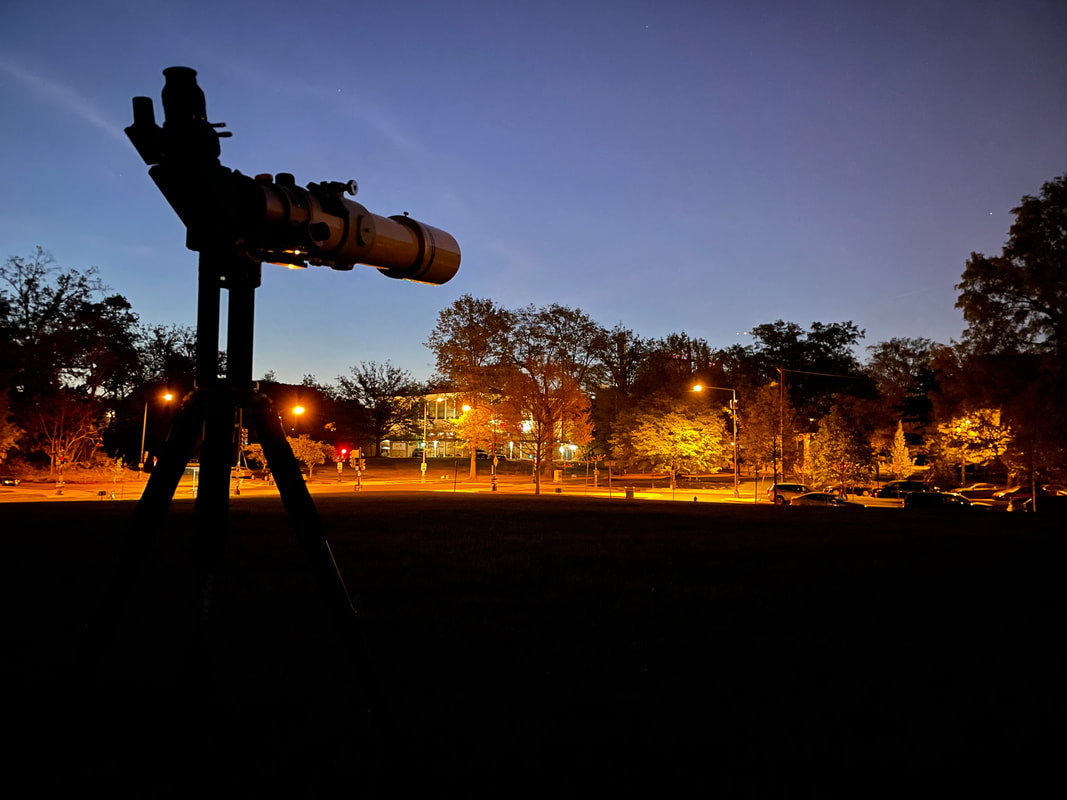
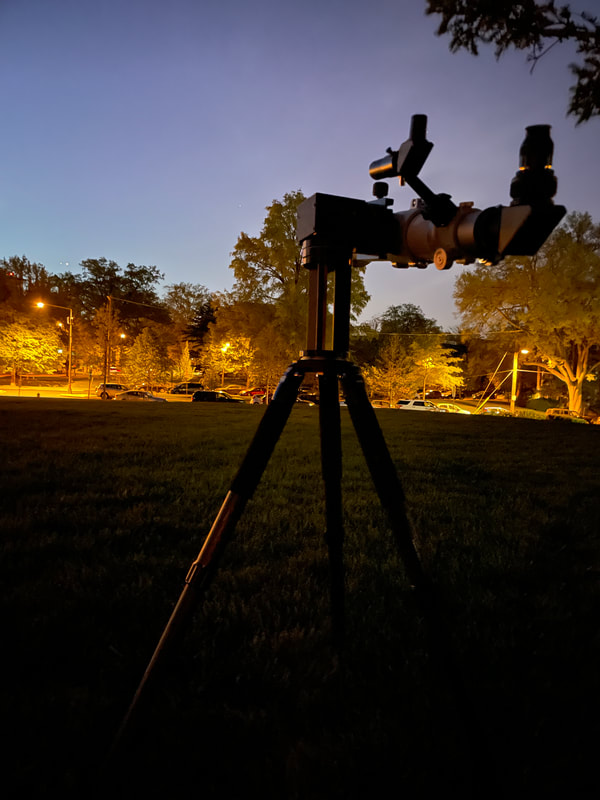
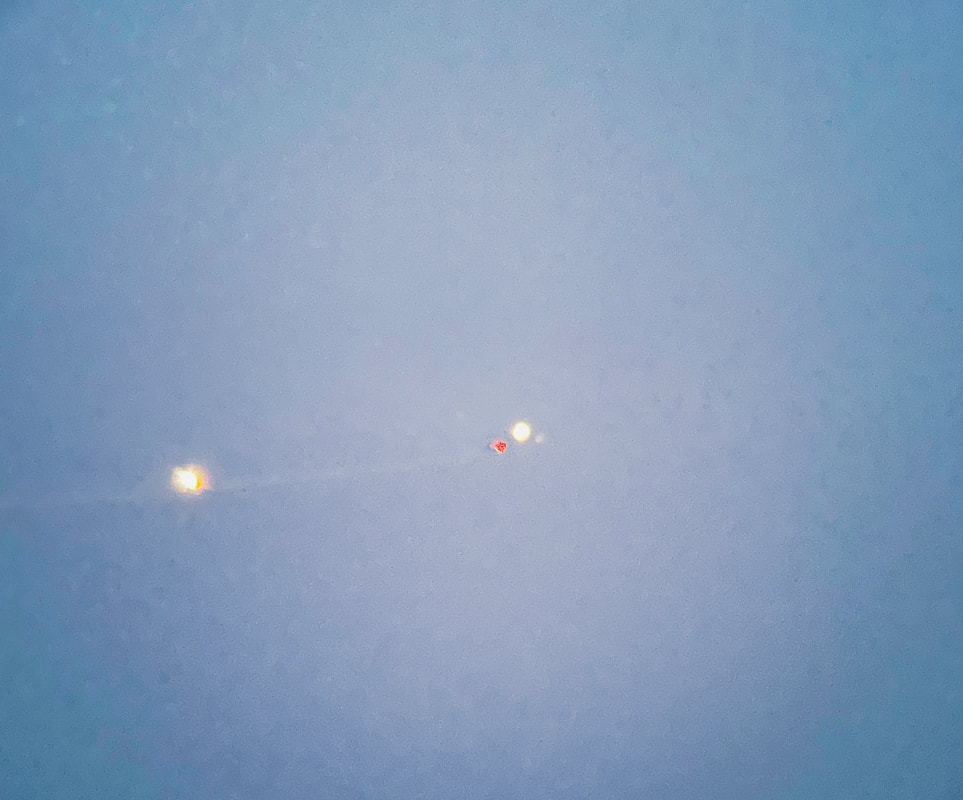
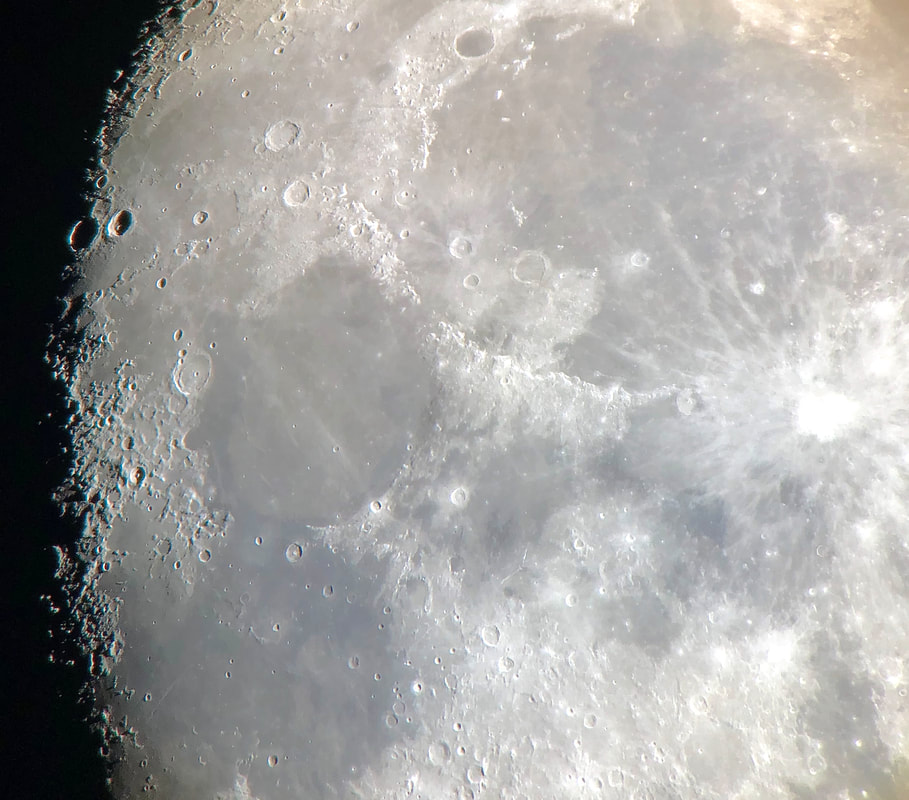
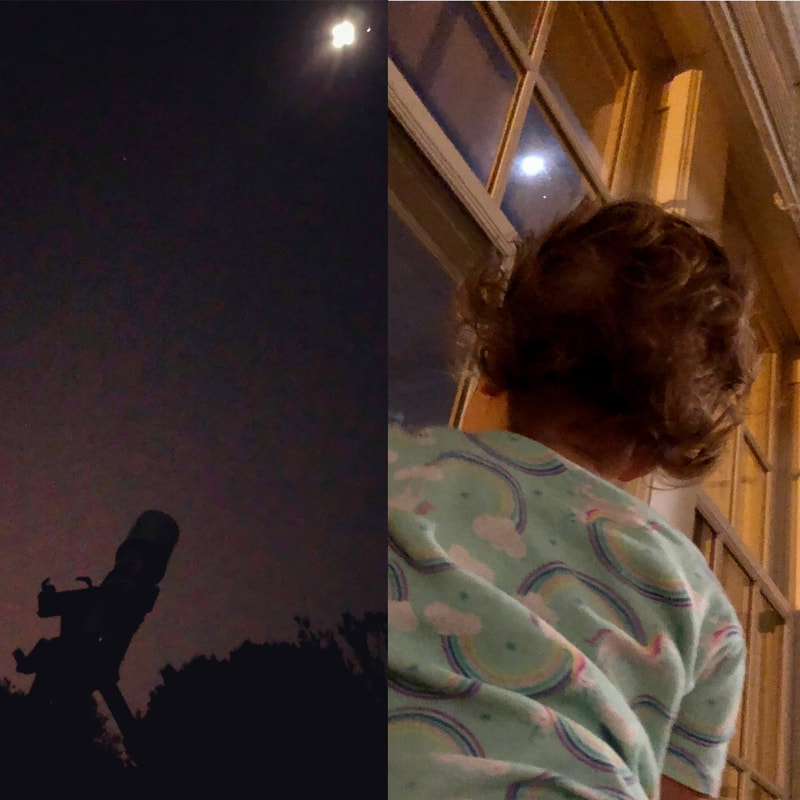
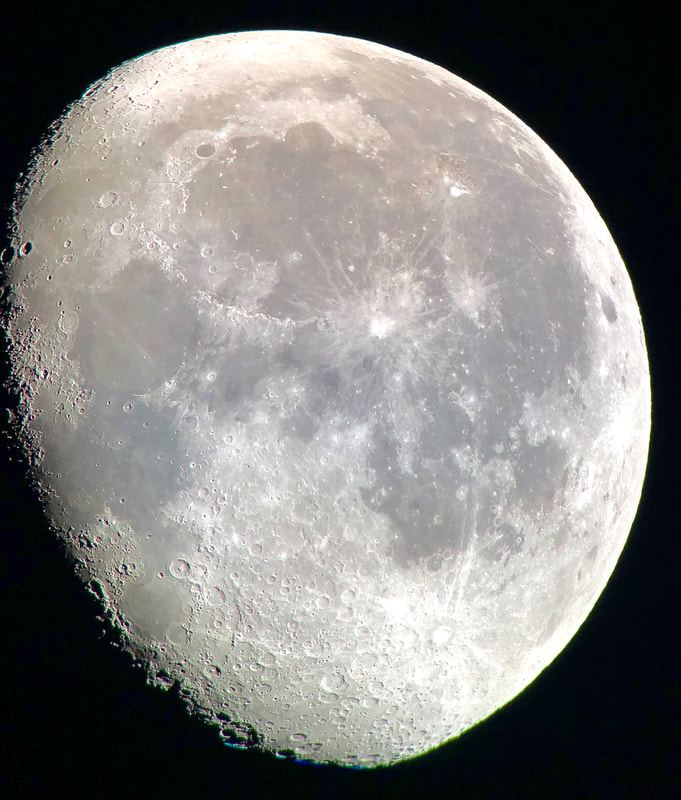
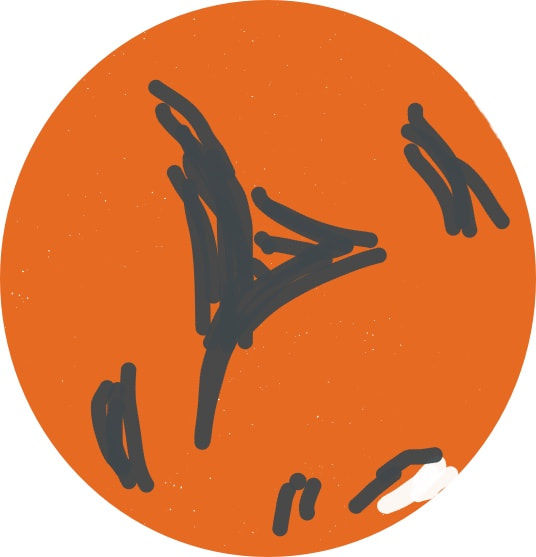
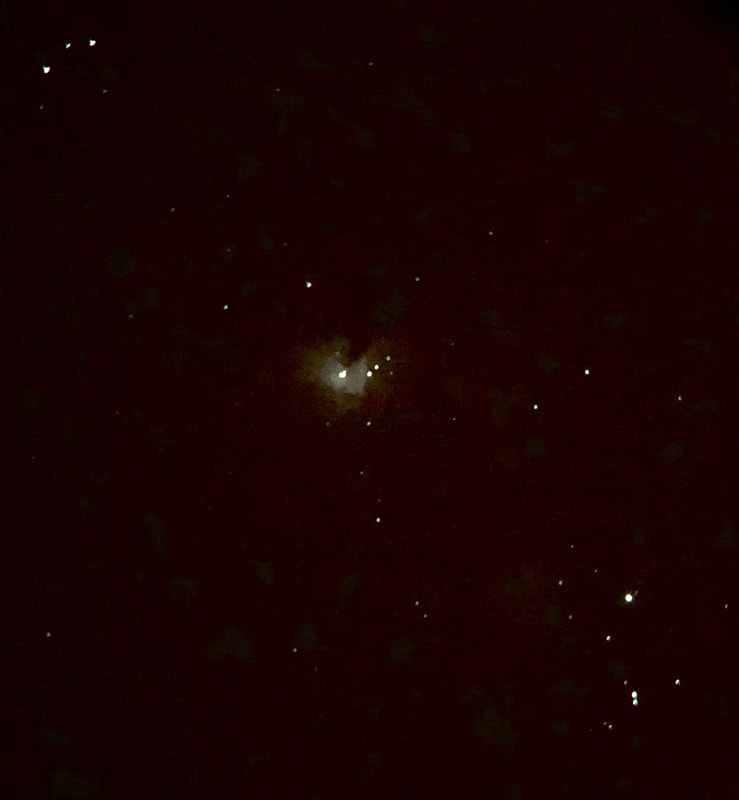
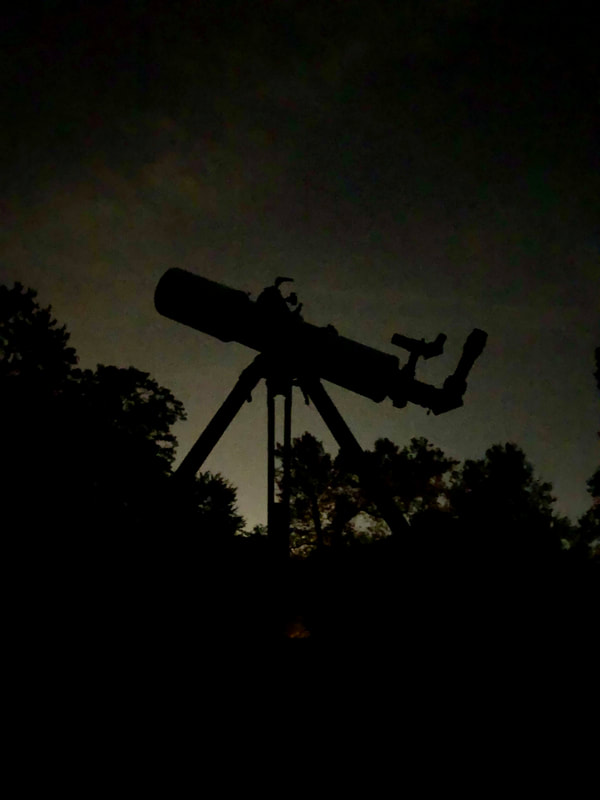
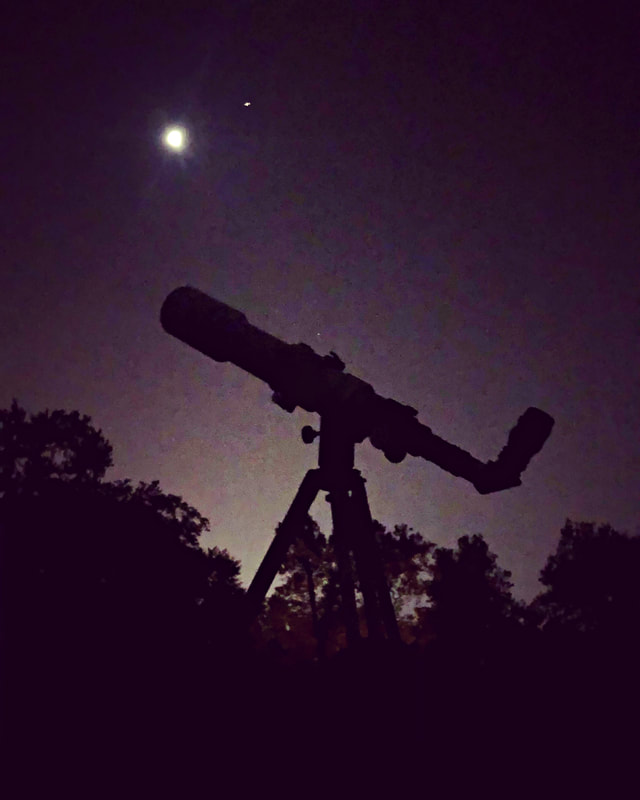
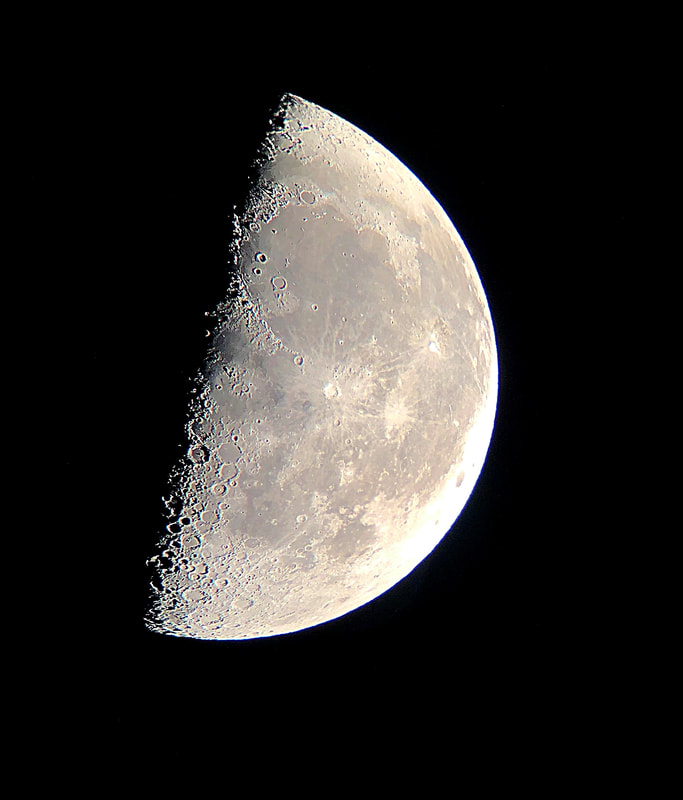
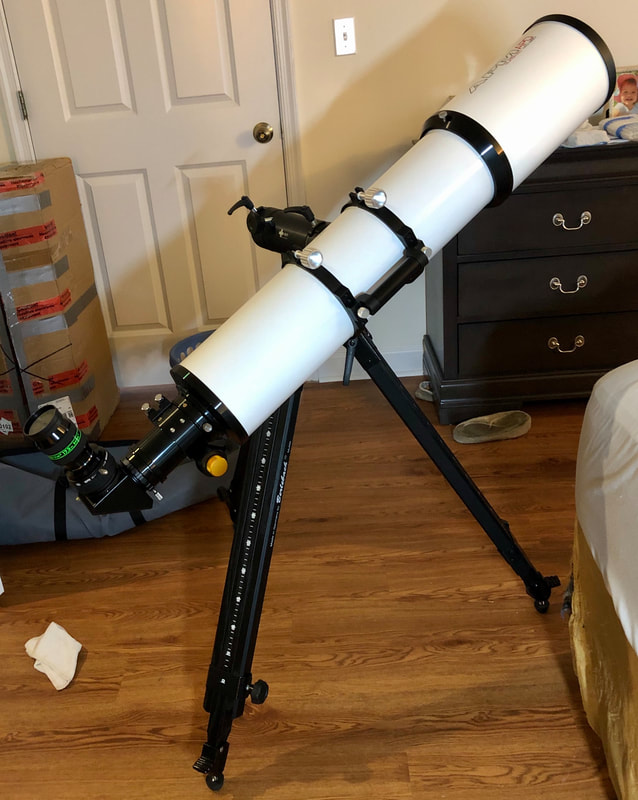
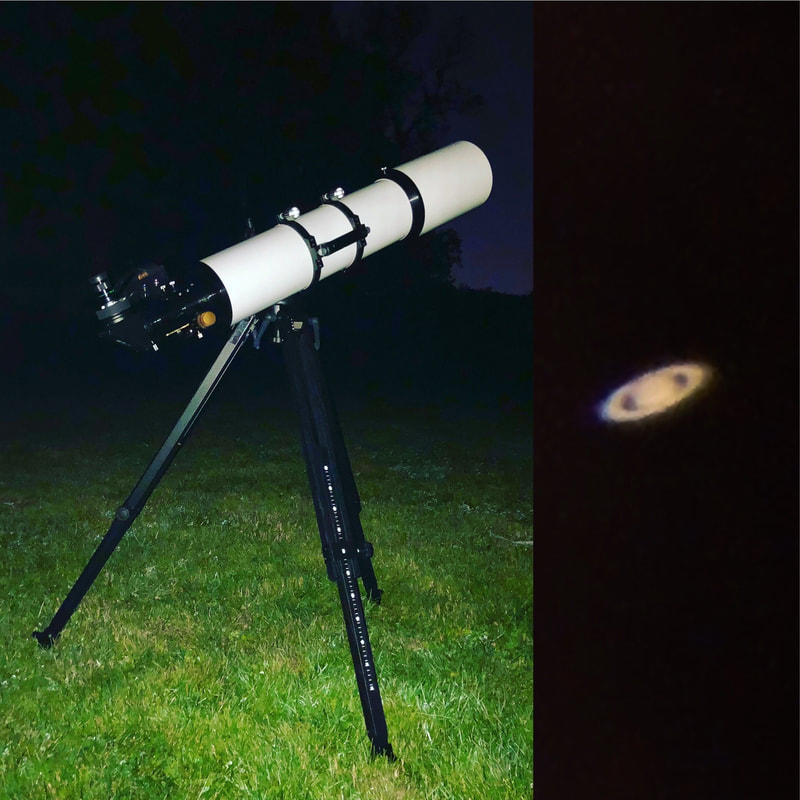
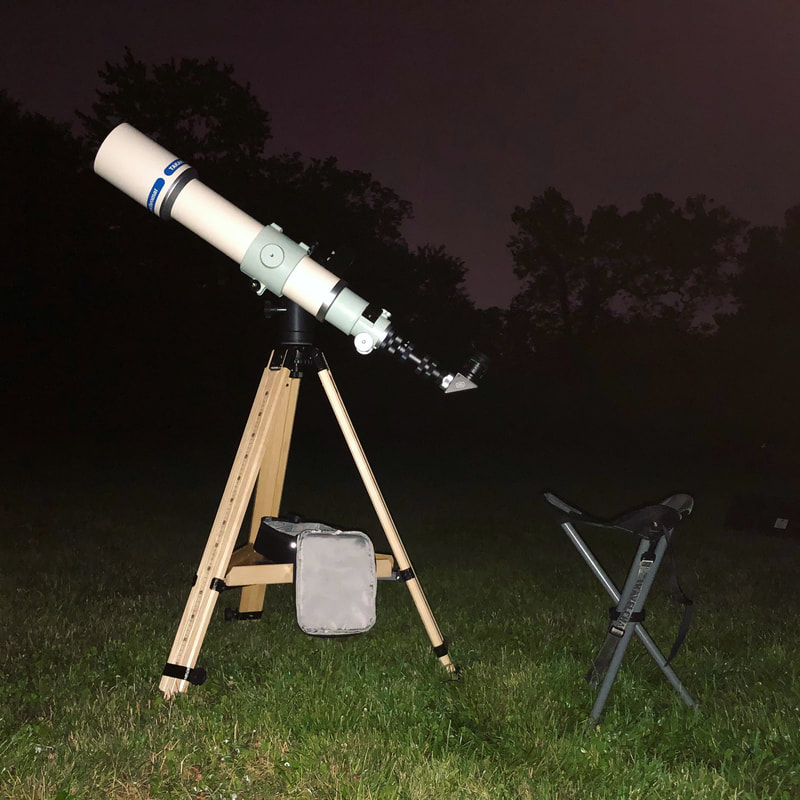
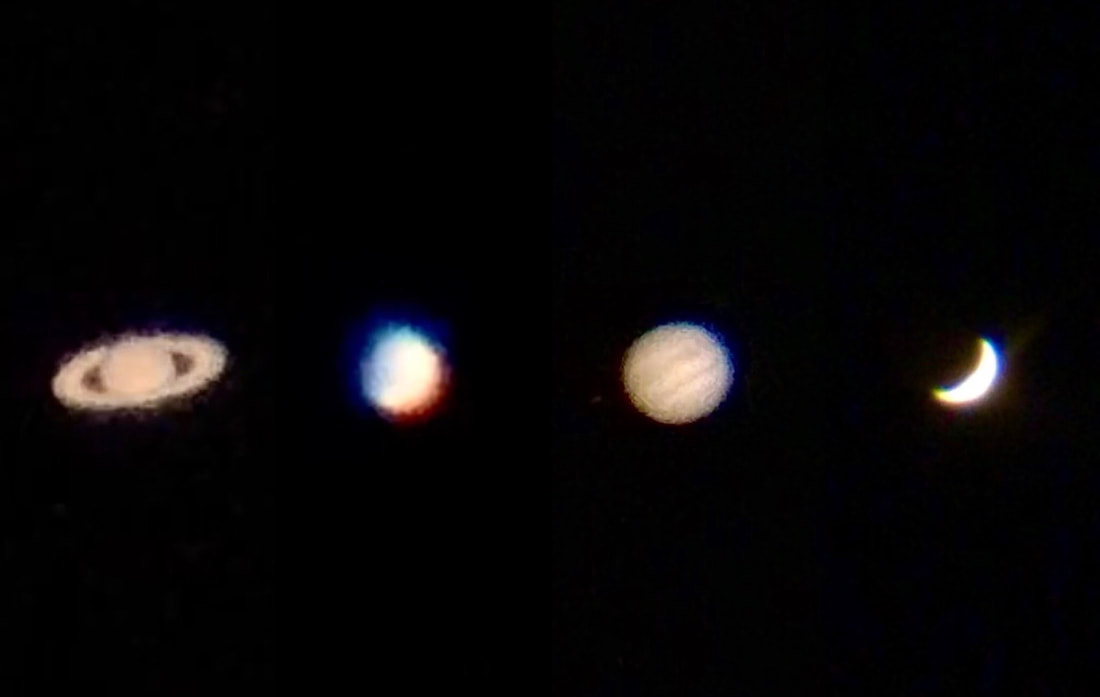
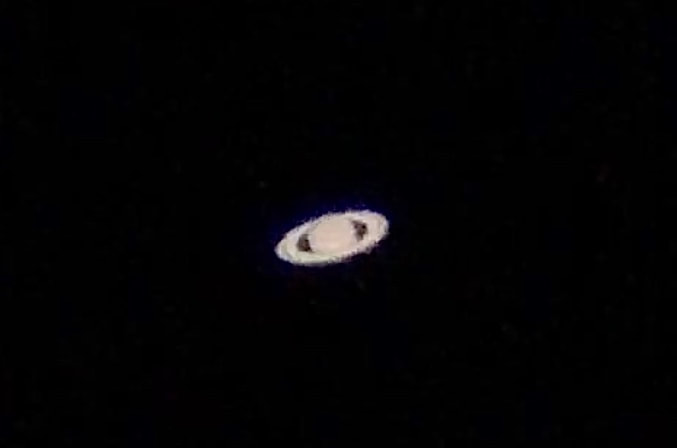
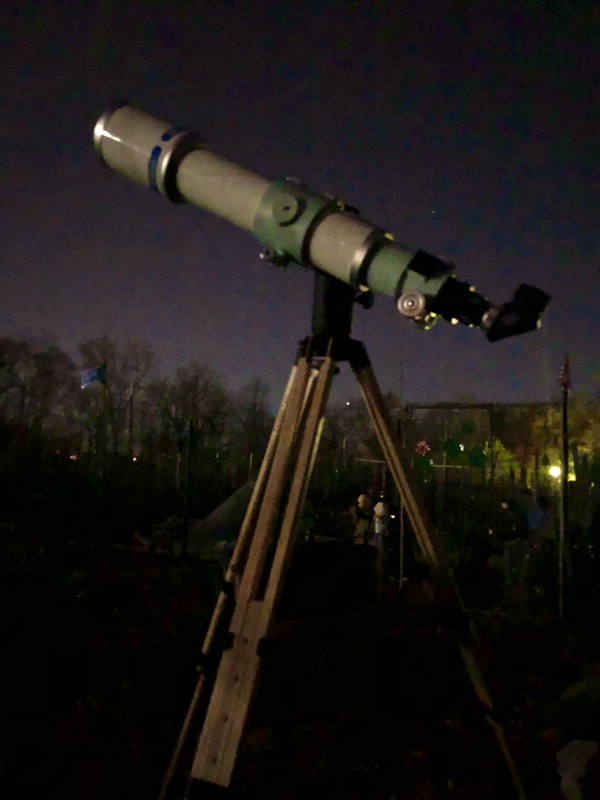
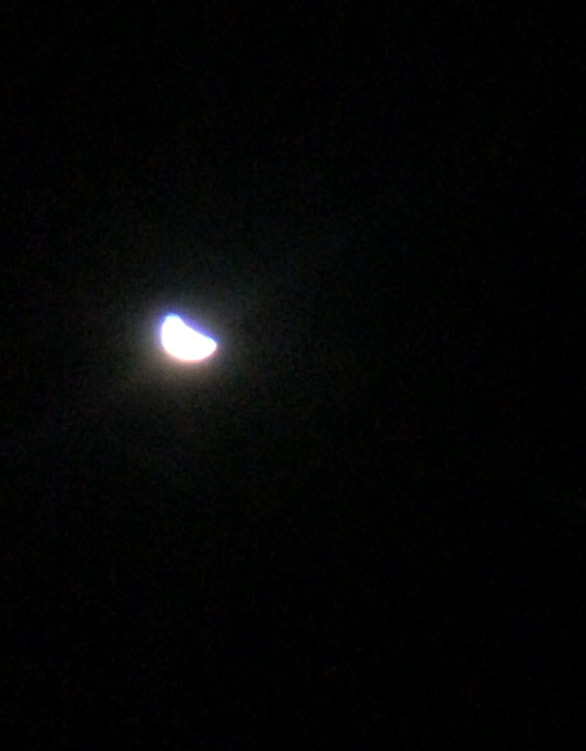
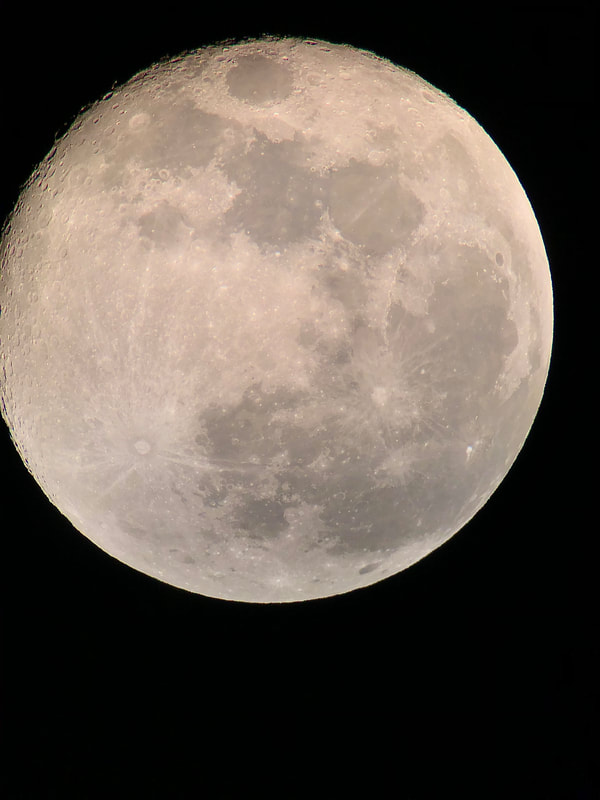
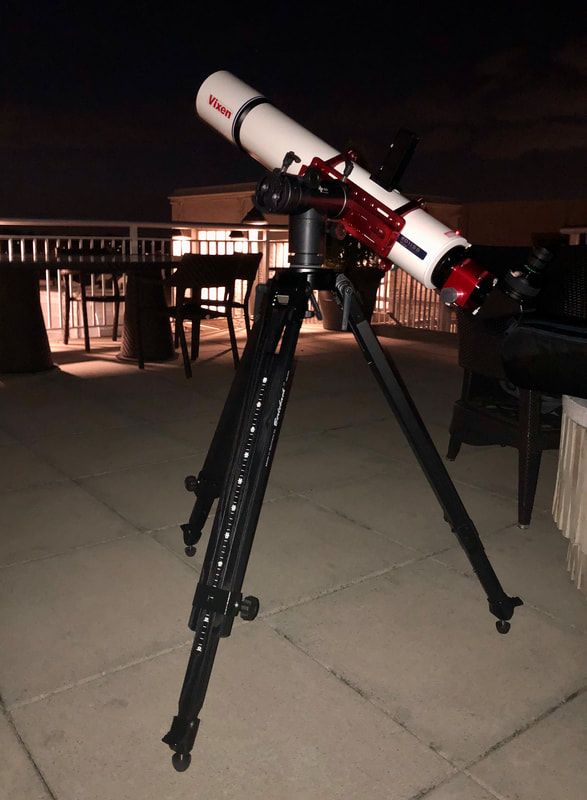
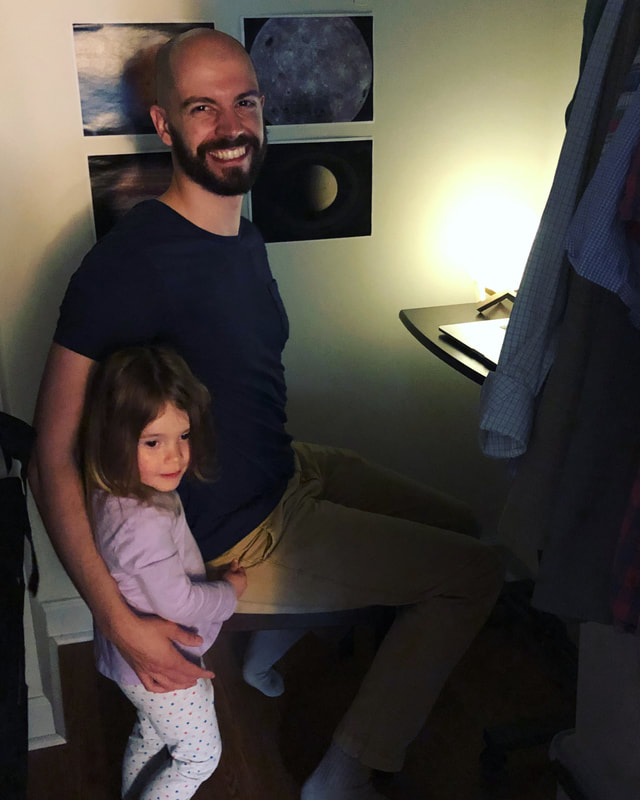
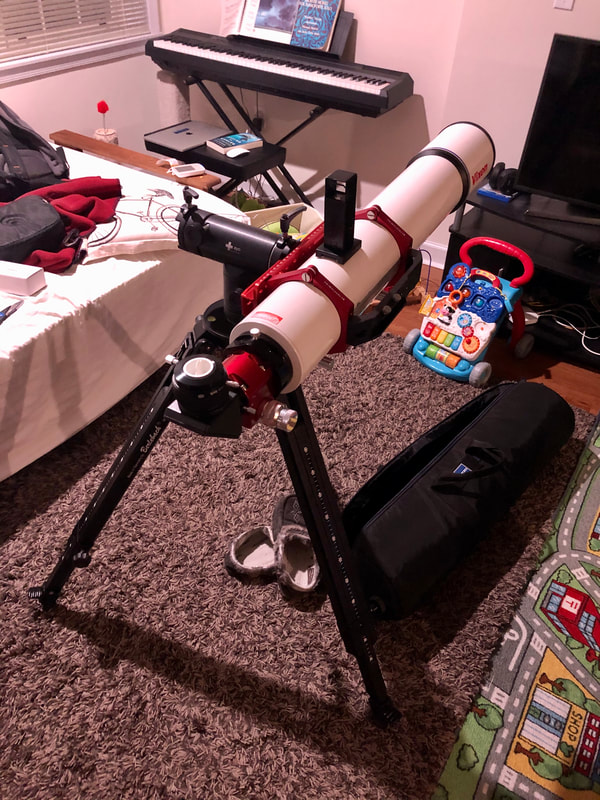
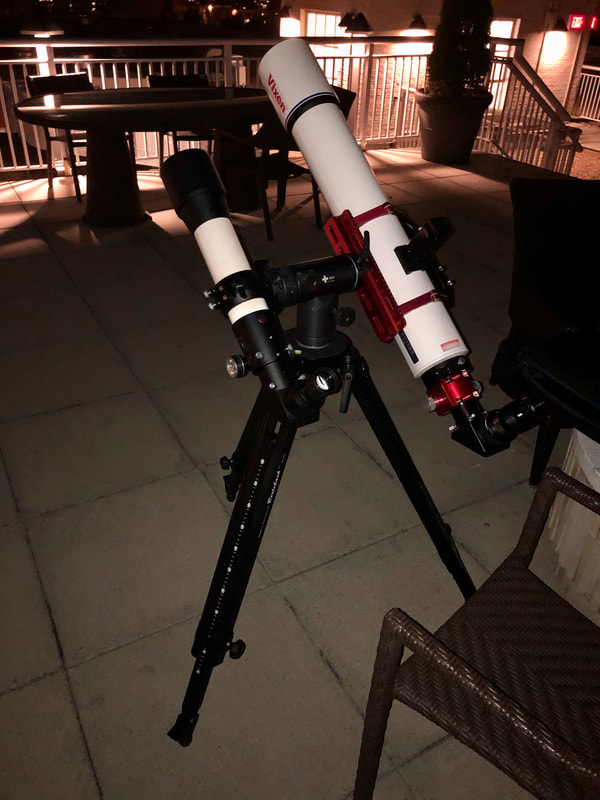
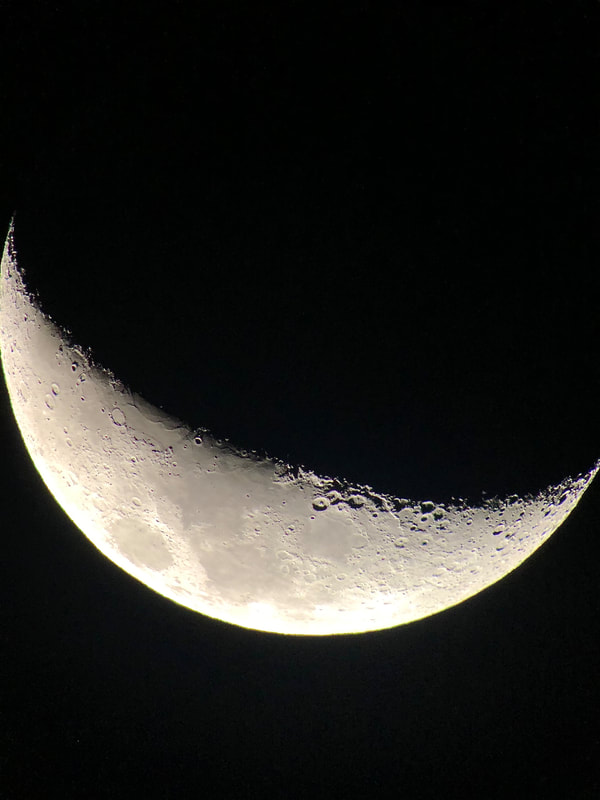
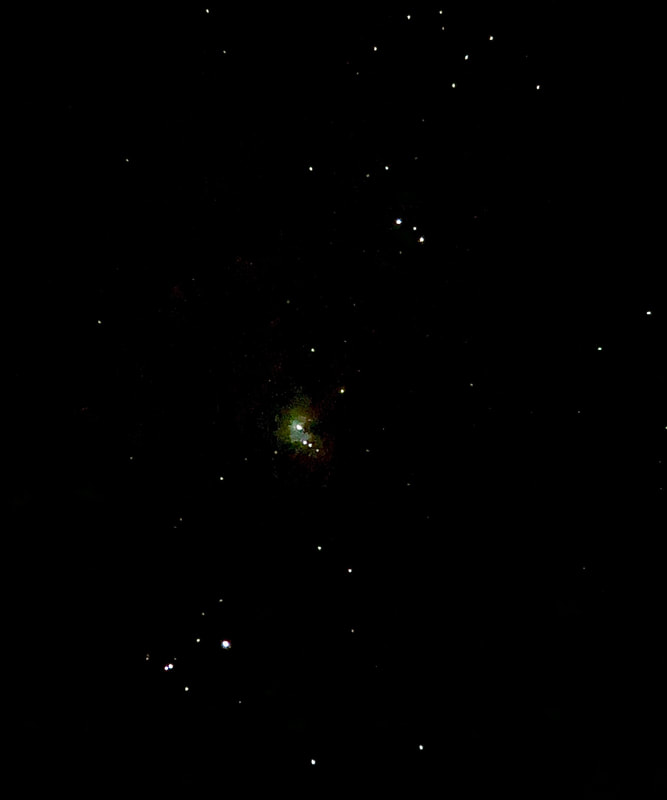
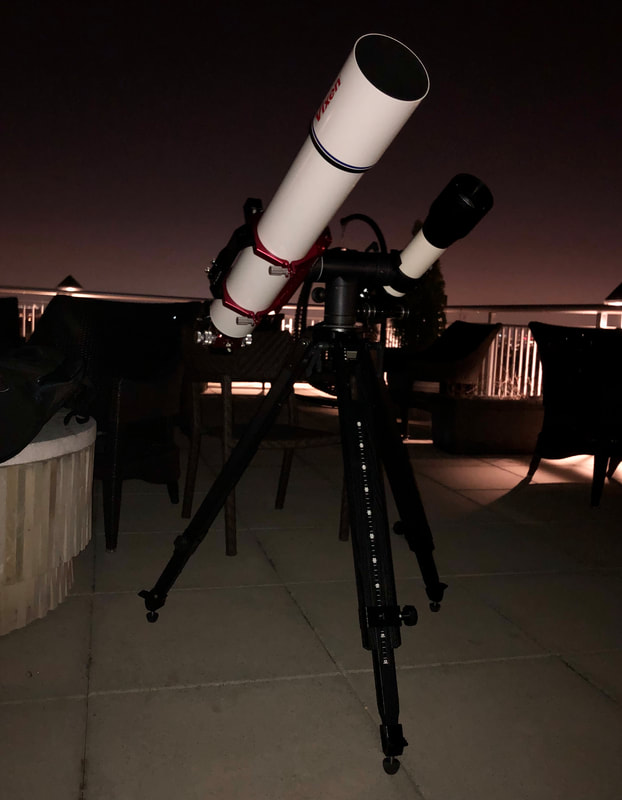
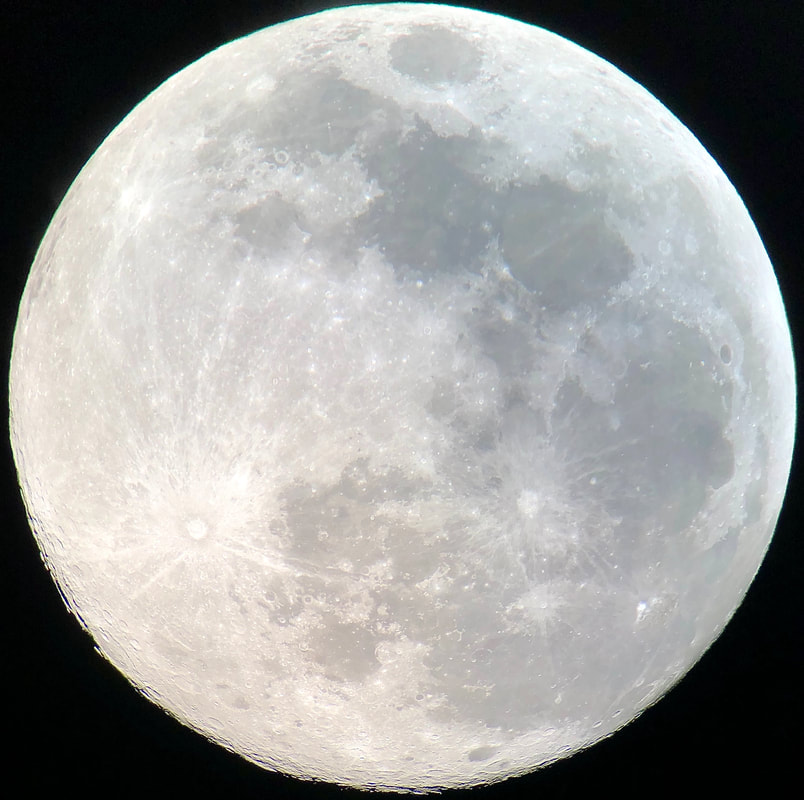
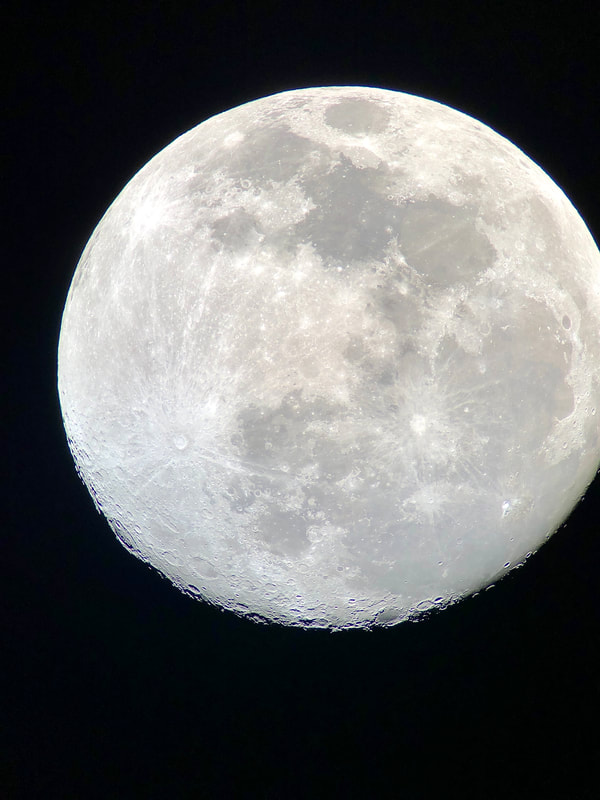
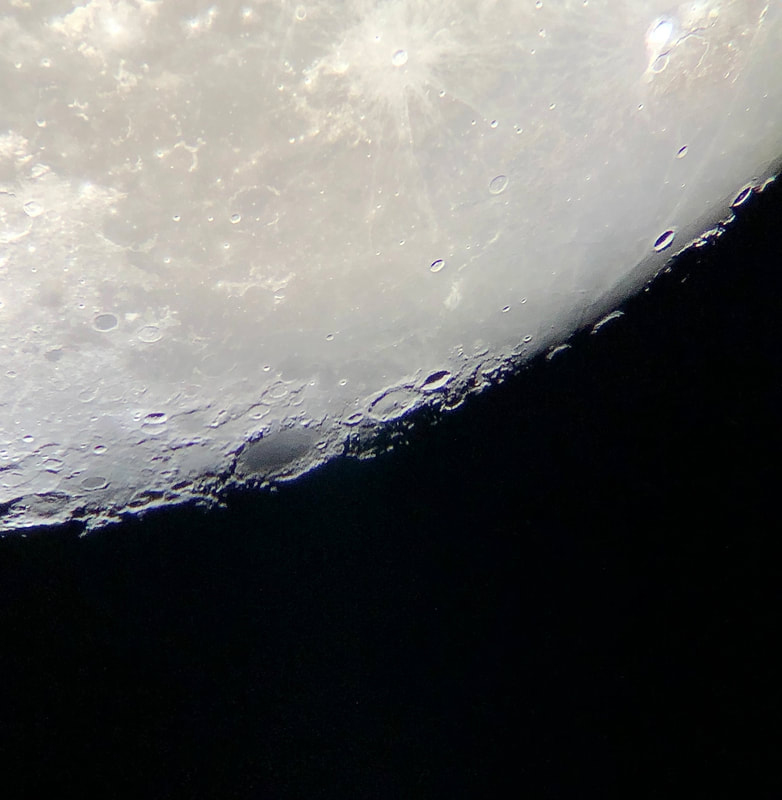
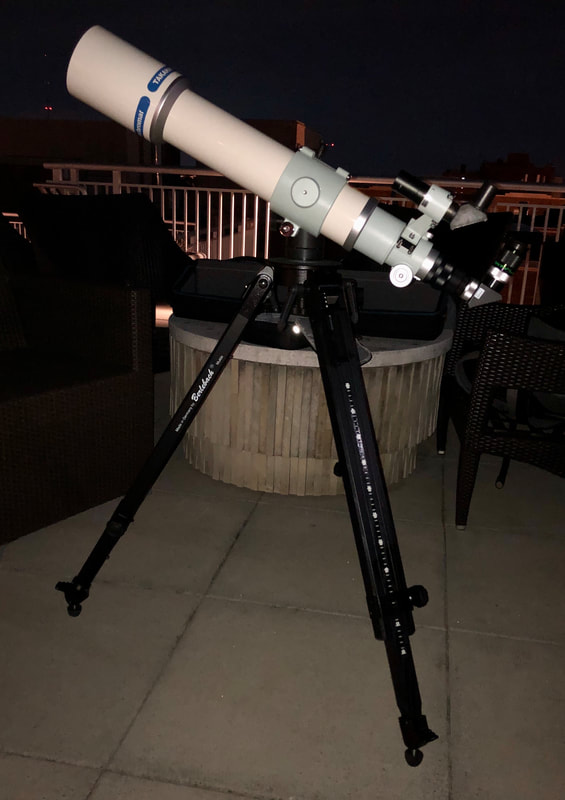
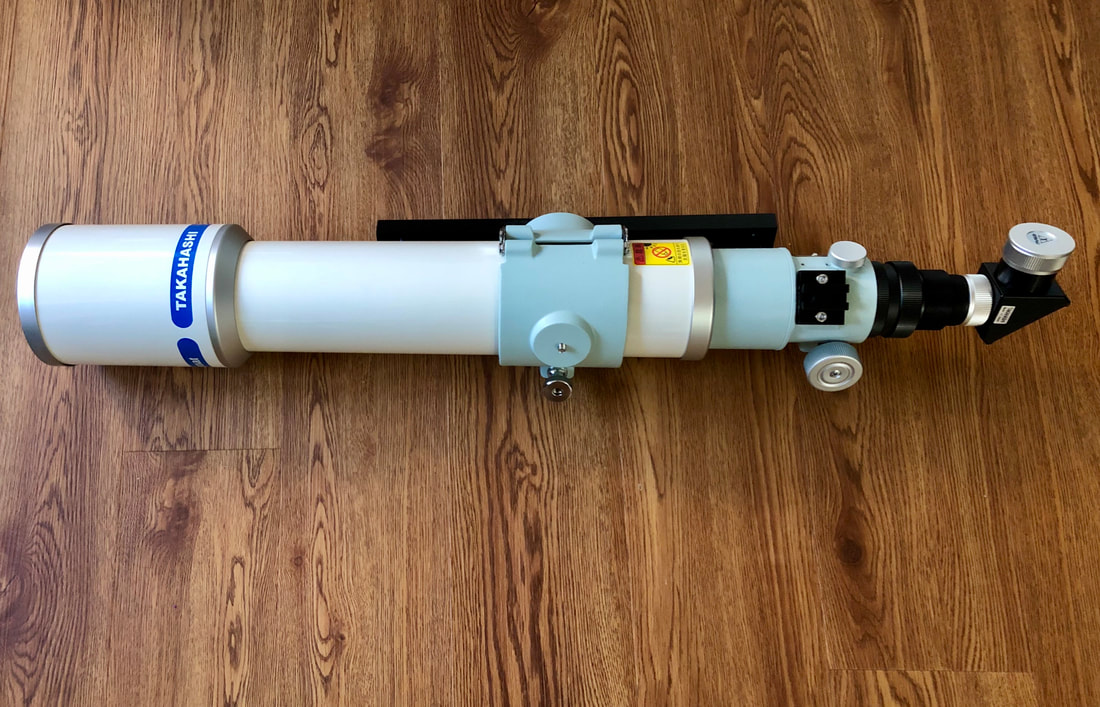
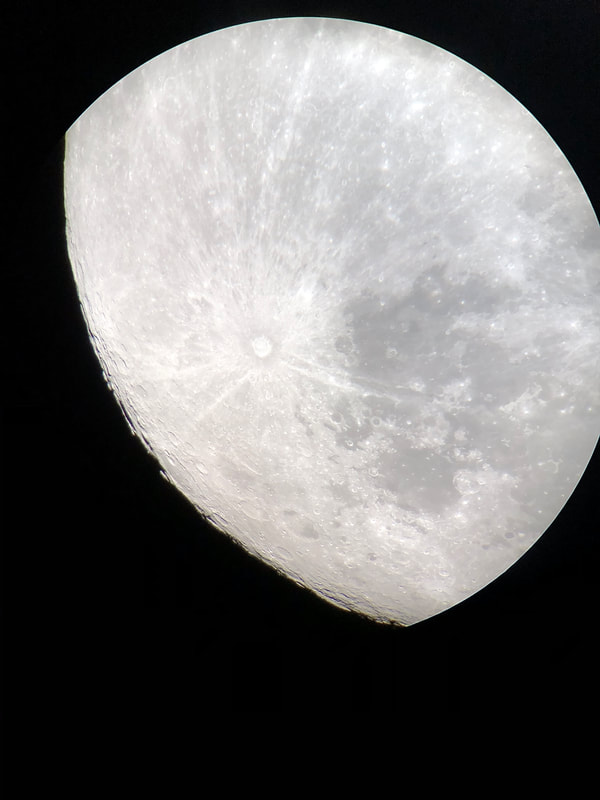
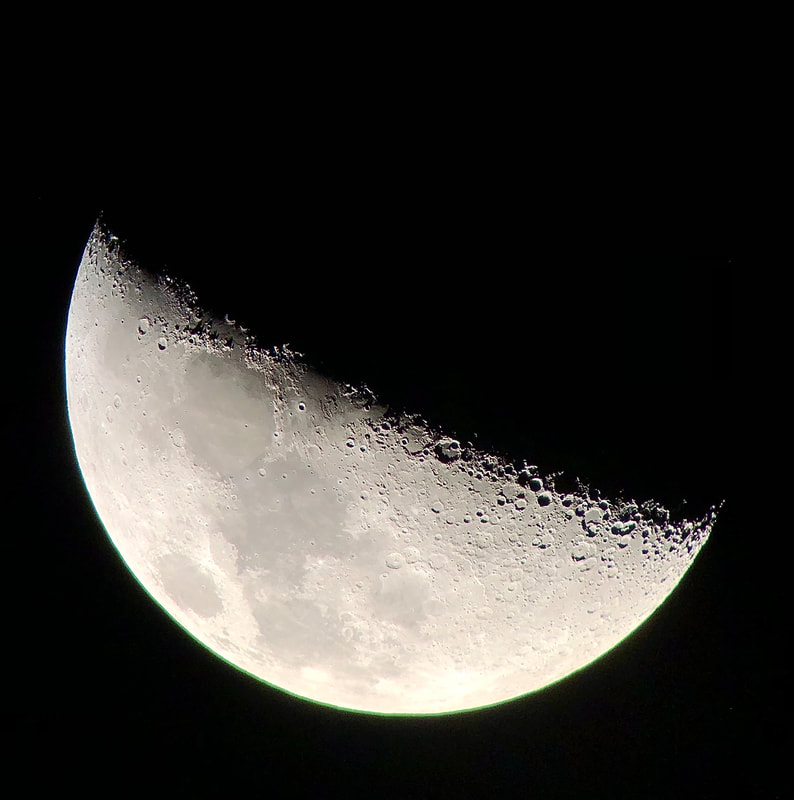
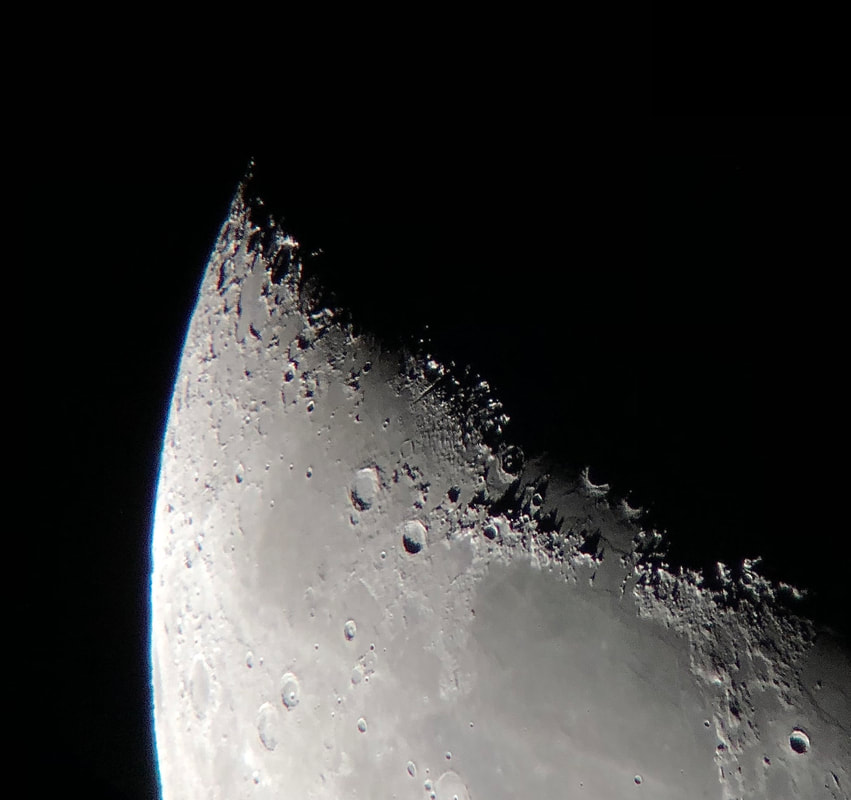
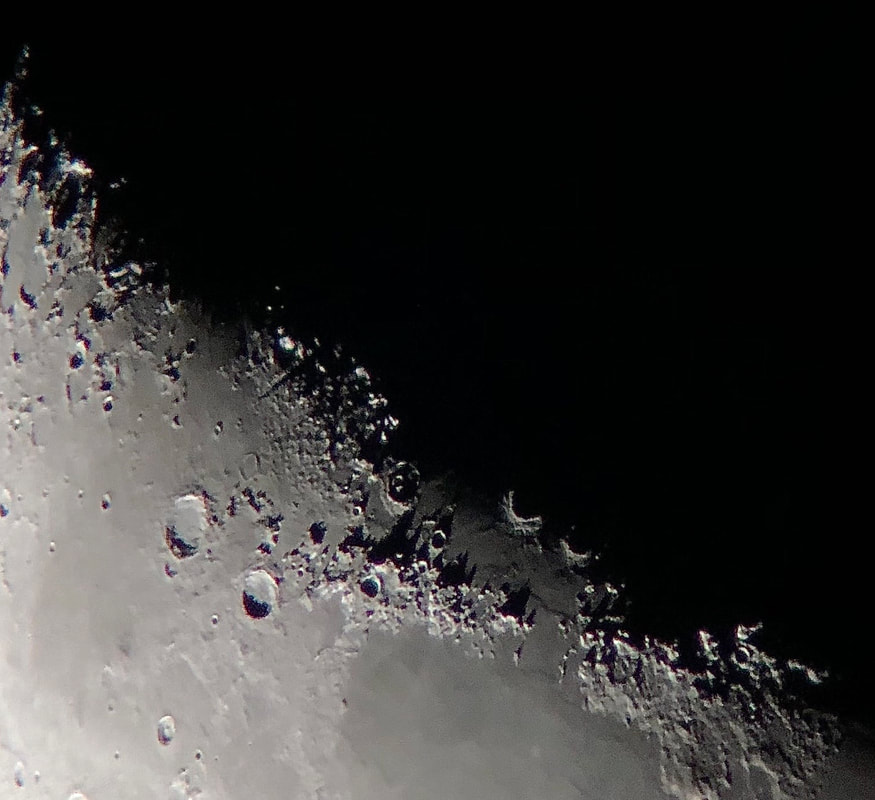
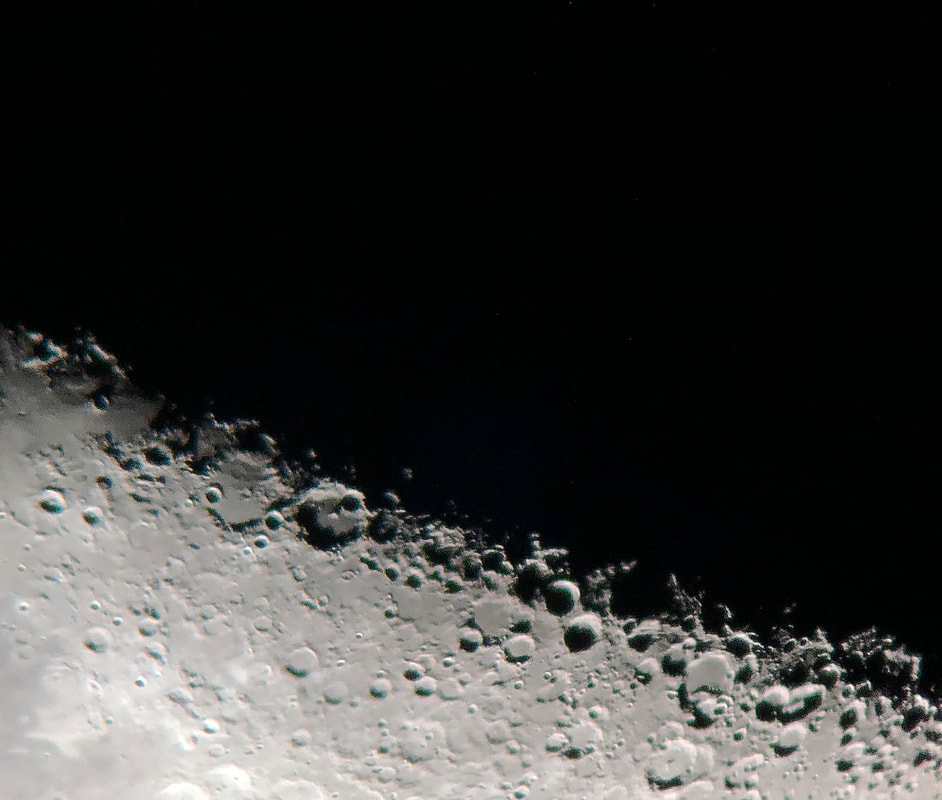
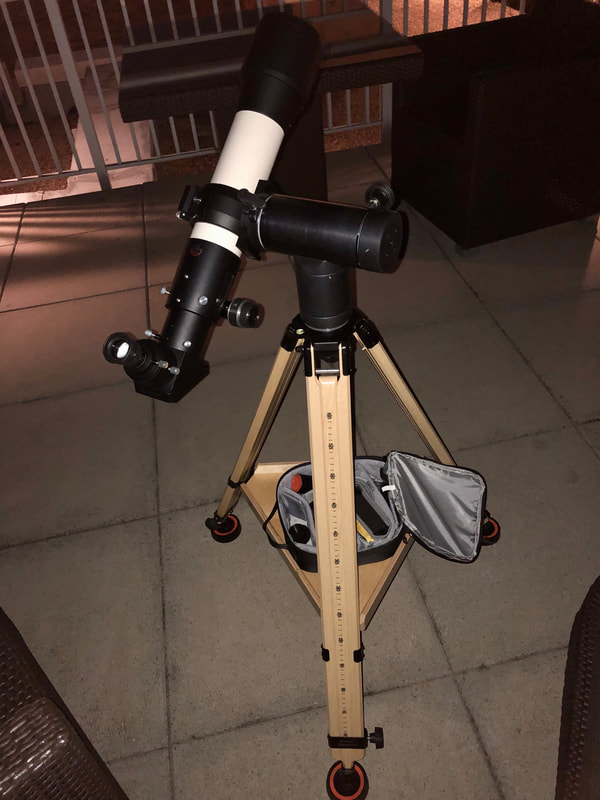
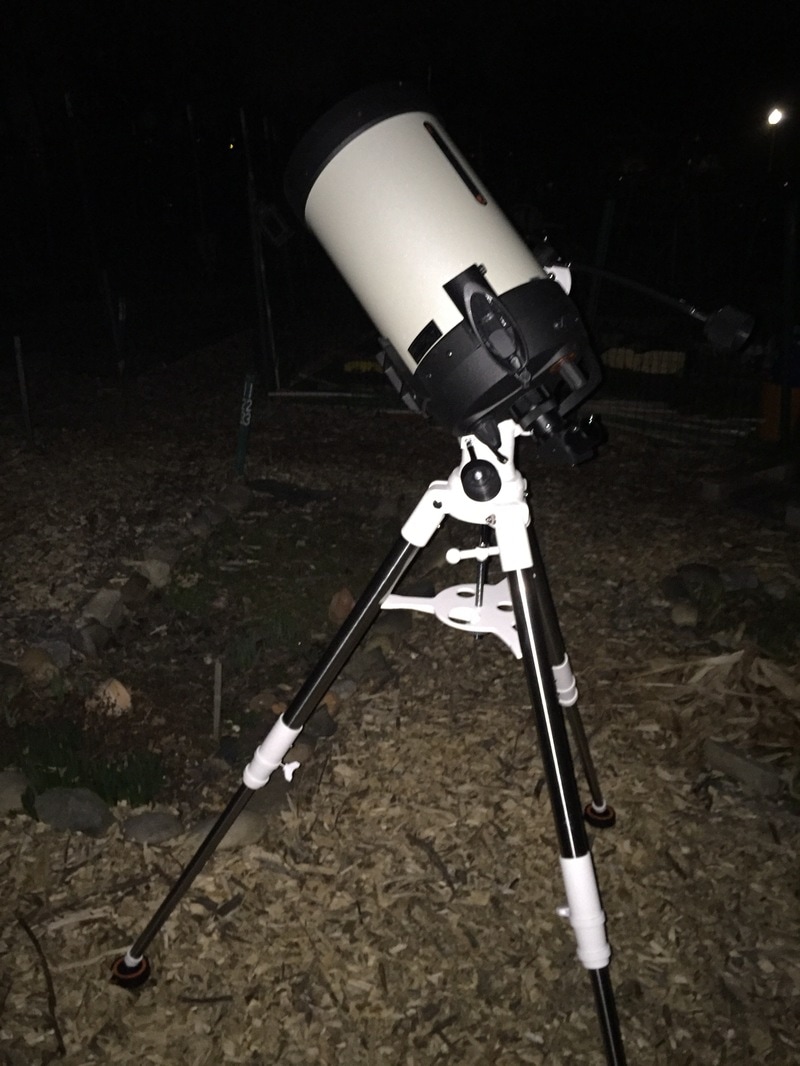

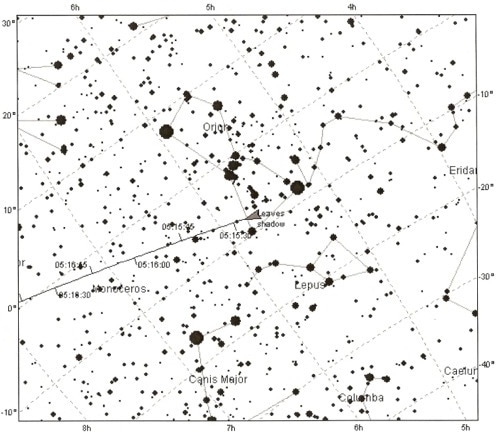
 RSS Feed
RSS Feed